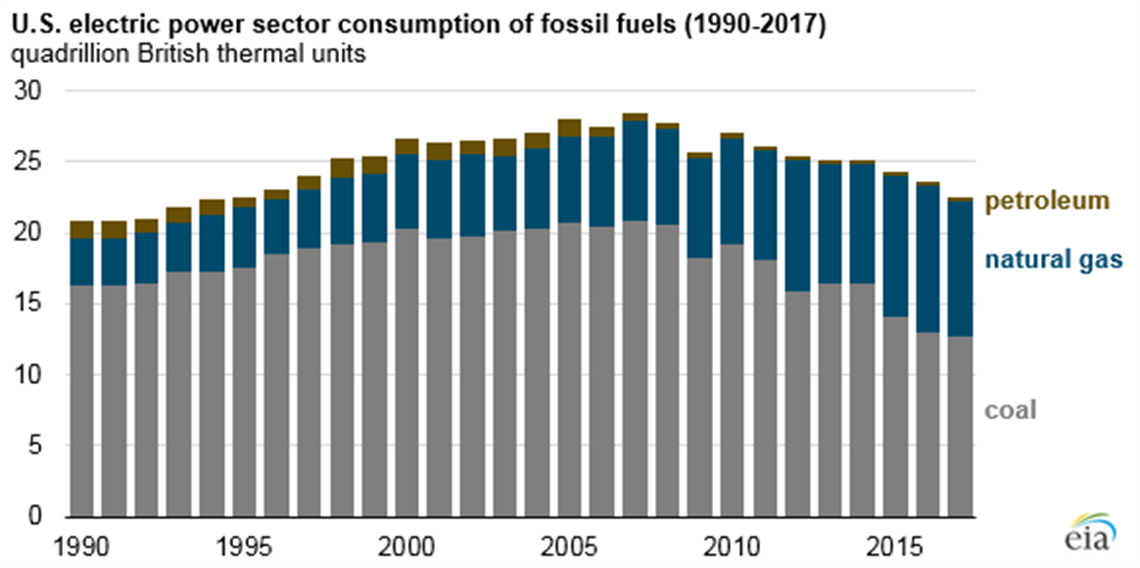Gas Continues Climb In Electricity Mix
29 May 2018

Fossil fuel consumption in the electric power sector declined to 22.5 quadrillion BTUs (quads) in 2017, the lowest level since 1994, according to a new report from the U.S. Energy Information Administration (EIA). The declining trend in fossil fuel consumption by the power sector has been driven by a decrease in the use of coal and petroleum with a slightly offsetting increase in the use of natural gas. Changes in the fuel mix and improvements in electricity generating technology have also led the power sector to produce electricity while consuming fewer fossil fuels.
Recent natural gas consumption in the power sector has generally been increasing, but 2017 consumption was slightly lower than the record-high 2016 level.
In energy-equivalent terms, more coal was consumed in the power sector than natural gas in 2017, at 12.7 quads and 9.5 quads, respectively. However, in terms of electricity generation, natural gas-fired power plants in the electric power sector produced more electricity than coal-fired plants, at 31% and 30% of the U.S. total, respectively, in 2017. Natural gas-fired units tend to be more energy efficient, requiring less energy content to produce a unit of electricity, EIA said.
As recently as 2000, natural gas-fired power plants were on average about as efficient as coal-fired plants. Since then, new natural gas-fired power plants have tended to use combined-cycle generation systems, which are more efficient because the waste heat from the gas turbine is routed to a nearby steam turbine that generates additional power.
Combined-cycle units now make up most of the natural gas-fired electricity generation capacity. By the end of 2018, natural gas combined-cycle units may surpass conventional coal-fired power plants to become the most prevalent technology for generating electricity in the United States, EIA said.
As the natural gas-fired generation fleet has grown and become more efficient, the generation-weighted average efficiency of fossil fuel-fired electricity generation has improved. In 1994, fossil fuel power plants required 10,400 British thermal units (Btu) of primary energy to produce each kilowatthour (kWh); by 2017 that rate had fallen to 9400 Btu/kWh.
STAY CONNECTED




Receive the information you need when you need it through our world-leading magazines, newsletters and daily briefings.
POWER SOURCING GUIDE
The trusted reference and buyer’s guide for 83 years
The original “desktop search engine,” guiding nearly 10,000 users in more than 90 countries it is the primary reference for specifications and details on all the components that go into engine systems.
Visit Now
CONNECT WITH THE TEAM









